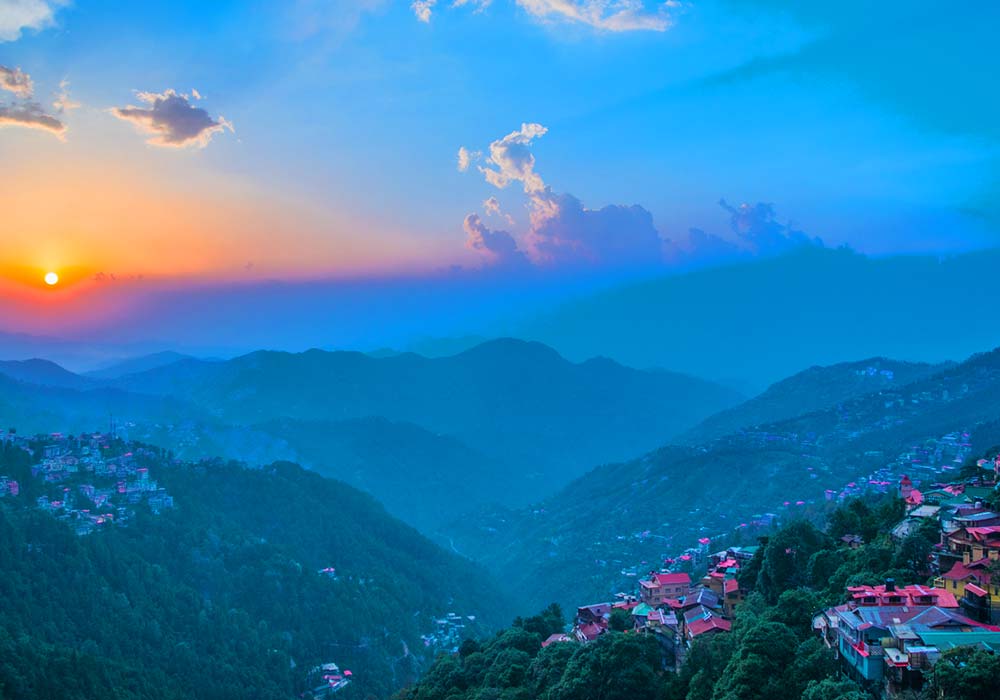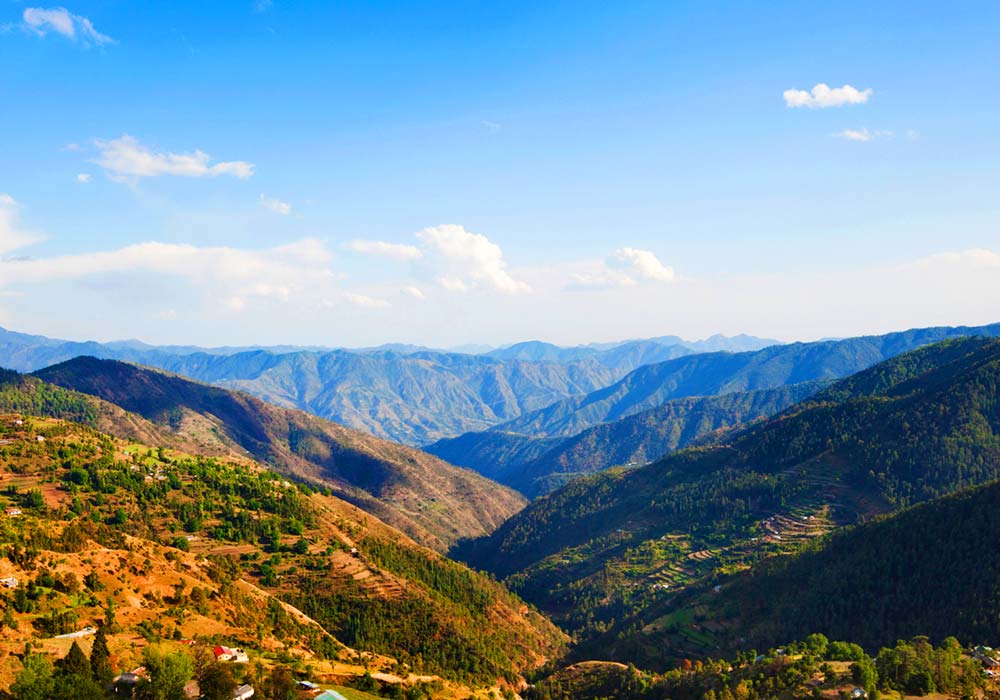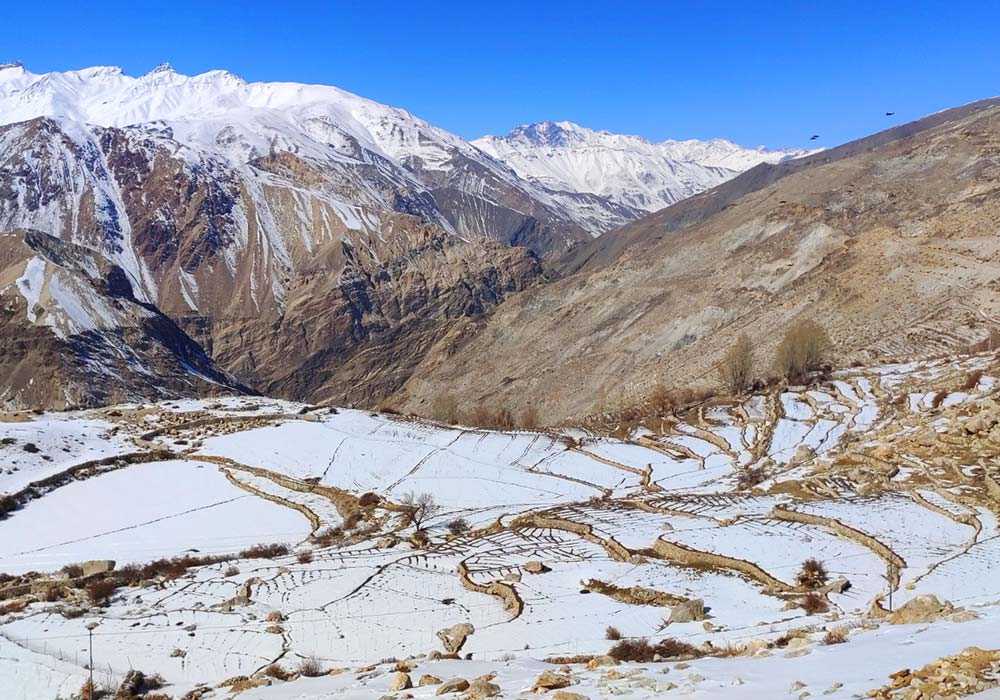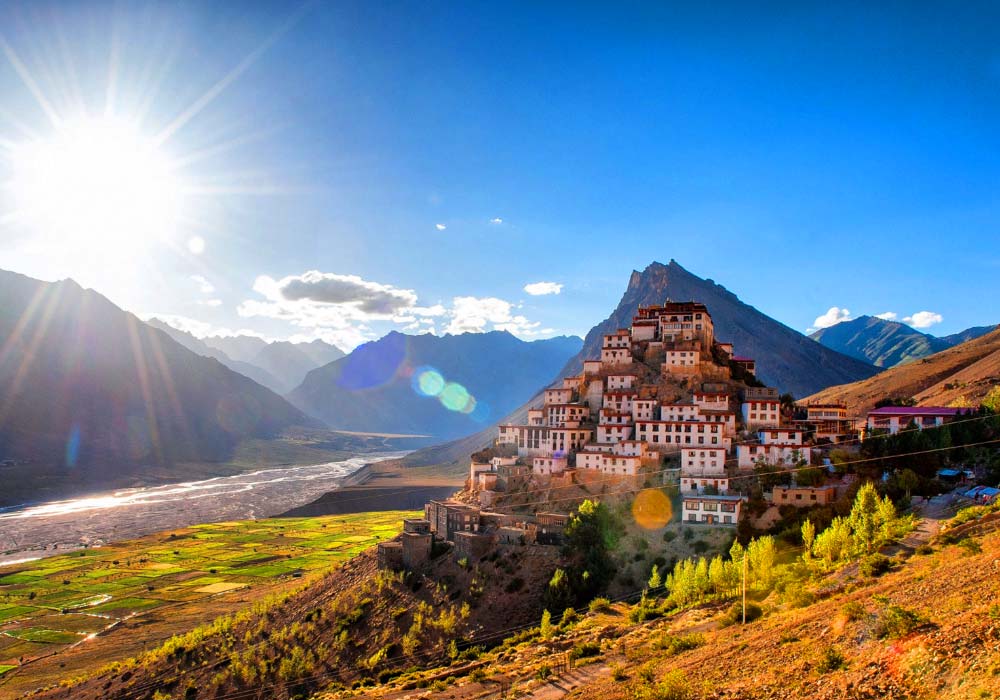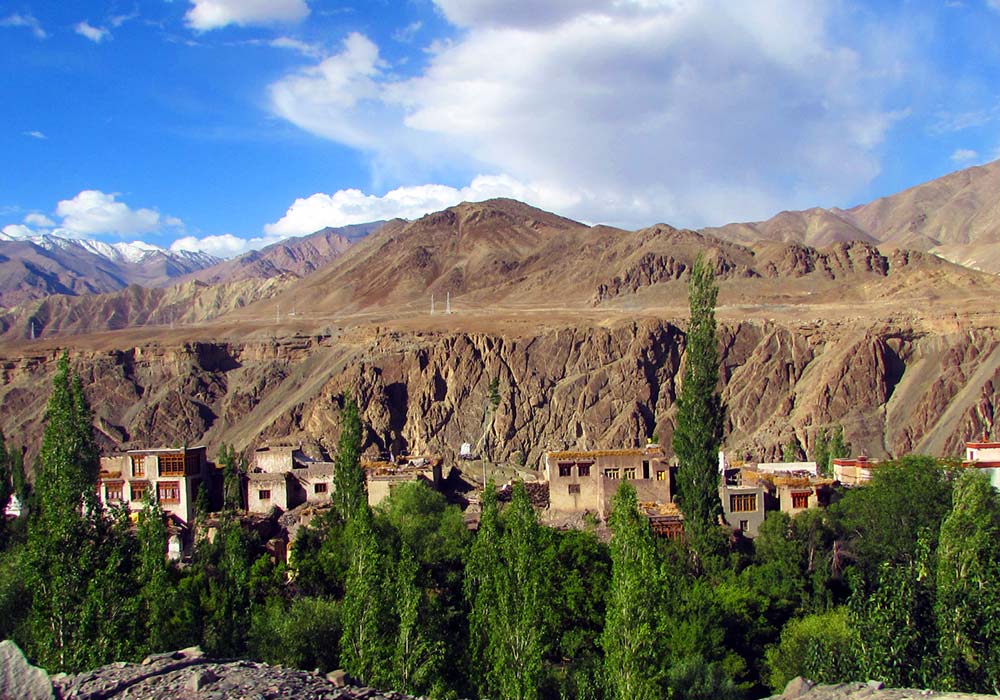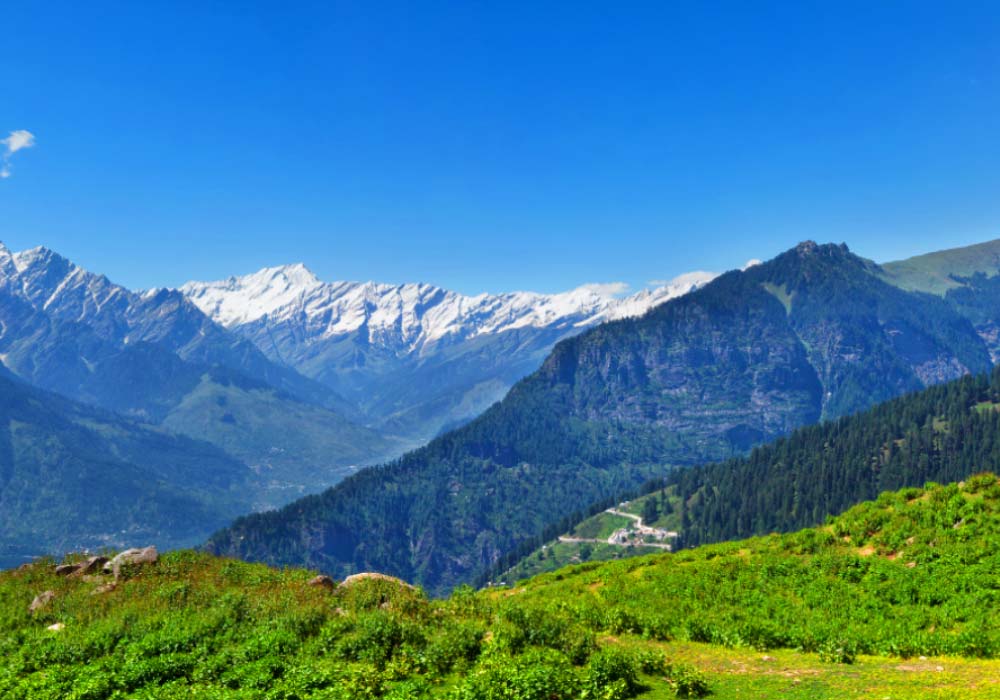Himachal Pradesh is an enchanting part of the Indian Himalayas and is often referred to as the magical showcase of nature’s splendors. Verdant green meadows and wide valleys set against imposing snow-clad mountains; limpid lakes, torrential rivers and gushing streams; fruit laden orchards and gentle terraces of corn and tea all characterize this state. Honeymoon Resorts in Himachal Pradesh are great places to stay. Honeymoon Resorts in Himachal Pradesh offer a luxurious stay with the lap of Mother Nature. Honeymoon Resorts in Himachal Pradesh are romantic owing to their ideal setting. So, the next time you are planning to spend the golden time of your life in Himachal, check out the Honeymoon Resorts in Himachal Pradesh. During the peak season Honeymoon Resorts in Himachal Pradesh are pre-occupied and advance booking is advisable.
After India became free in 1947, a number of princely hilly states were integrated into a single unit to be administered by the Government of India through a Chief Commissioner. As a result, Himachal Pradesh came into being as a part C state of the India Union on April 15, 1948, by integrating 31 big and small hill states of the region. In 1956, following the recommendations of the State Reorganization Commission, it was converted into a Union Territory. Subsequently, some more hill areas of the erstwhile Punjab state were added to this Union Territory and it was made into a full-fledged state, the status that it continues to have now.
Punjab on the west, Uttar Pradesh on the southeast, China on the east, Haryana on the southeast, and Jammu and Kashmir on North border the Indian state of Himachal Pradesh. It extends from the latitudes 30°22’40” North to 33°12’40” North and longitudes 75°45′ 55″ East to 79°04′ 20″ East.
The entire region of Himachal Pradesh is hilly with the altitude ranging from 350 meters to 7000 meters above sea level. Forming a part of the Punjab Himalayas, the altitude increases from west to east and from south to north. Geographically, Himachal Pradesh can be divided into three distinct regions, the Shivalik or outer Himalayas, middle Himalayas or inner Himalayas, and greater Himalayas or the alpine zone.
The lower Himalayas include the districts of Hamirpur, Kangra, Una, Bilaspur, and the lower parts of Solan, Sirmaur, and Mandi commonly known as the Shivalik Hills. The altitude in this region ranges from 350 meters to 1,500 meters.
The middle Himalayas comprise the region between the altitudes of 1,500 meters and 4,500 meters. The districts under this region are parts of Sirmaur, Mandi, and the upper parts of Kangra, Shimla, and Chamba.
The greater Himalayas or the alpine zone is at an altitude of 4,500 meters and above. The region is cut across by the river Sutlej and comprises the Kinnaur and Pangi tehsils of Chamba, and some part of Lahaul and Spiti.
There are evidences of pre-historic humans existing in this region. It is also believed that a large number of people inhabiting this region had actually migrated from Central Asia and the Indian plains time to time. The first race to enter this region was Proto-Australoid, the second was Mongoloid, and the third was Aryan. There is mention in the Rig Veda of Dasyus and Nishads living in this region and their powerful king Shambra who had 99 forts. The Aryans, who were superior in war tactics, defeated the local tribes and settled here permanently. This period also saw the establishment of small Janpadas (republics) in Himachal. They had a good relationship with the Mauryans, which made sure that they remain independent for a long time. Their independence lost with the rise of the Guptas in the North Gangetic plains.
After the decline of the Guptas, several small kingdoms came to rule this hilly state and established their power in its different regions. They continuously fought with each other and the history of Himachal Pradesh is full of the stories and legends related to these kingdoms. The British established many hill stations in this region to protect themselves from the extreme heat and dust of the northern plains in the summer. Shimla became the summer capital of India and even today, many old houses and buildings tell the story of English grandeur. Himachal Pradesh, which had the status of a union territory after independence, was granted statehood in 1971.
Fairs and festivals are an integral part of the Indian way of life and the land locked hill state of Himachal Pradesh is no exception to this. The celebrations range from religious to tribal to contemporary.
The New Year brings with it the National Snow Statue Competition at Kufri near Shimla. It is also time for ice-skating in the state capital. The bonfires of Lohri light up the night sky on January 13 every year. This festival marks the sowing of the Rabi (winter) crop.
February brings with it skiing competitions held at Solang Nullah in Manali. A fair in the memory of the seer Baba Barbhag Singh is held at around the same time at Una. It is believed that the Baba had magical powers, which were used towards altruistic ends. Basant Panchami or the arrival of spring is ushered in by the little kites that dapple the horizon with their color.
Shivratri or the festival to celebrate the marriage of Shiva in March signifies ritual gaiety at the famous Baijnath shrine. The cattle fair at Nalwari, Bilaspur is set amidst carnival atmosphere. Chait Durga Asthami is celebrated in the Shakti shrines at Hathkoti, Chitpurni, Jwalamukhi and Vajreshwari. Color and merrymaking mingle on Holi, the festival of colors at the Gurdwara at Paonta Sahib, Sirmaur.
In April, Chhat celebrations are held in Kullu and Chamba. Paonta Sahib welcomes Hindu and Sikh devotees on Baisakhi and Navratri too begins this month. Fairs are held in Chamba, Bilaspur, Kangra and Rohru village in Shimla district.
Around the old temple of Hidimba at Kullu, Doongri, a colorful celebration takes place in May. Banjar Mela in Kullu starts in the second half of the month. Paragliding season begin in Bir, Kangra.
Shimla, Dharamshala and Dalhousie welcome the summer in June with a variety of cultural events. The Prashar Fair is held in Mandi off the Prashar Lake. The Red Cross fair in Shimla is a big draw with tourists. The Himachal Folk Costumes Programme and the Flower Show in the capital attract active participation of the locals. Lahaul celebrates a unique festival called Cheeshu.
July marks the onset of monsoons when the rains paint everything green. Haryali is celebrated in Kangra and Sirmaur and Shravan Sankranti in Nahan.
Buffalo fights are the highlight of the Sari fair held at Arki in the month of August. The Lahaul Festival is held near Keylong. Kaza’s Ladarcha Fair sees lot of commercial activity on the hold trade routes to Tibet and Afghanistan. The Manimahesh Yatra starts in the district of Chamba. The famous fair of Naina Devi in Bilaspur also takes place this month. In the scenic Kullu Valley, this is the time for Badranjo.
In the first week of September, Fullaich (Phulech) take place in Kinnaur while Kangra plays host to Sair. Chamba is the location for the colorful fair of Rath-Rathni.
Dussehra is one of the most sacred festivals of the Hindu religion and is celebrated in October. The much talked about Dussehra celebrations start in Kullu with Navratri. The Pong Dam is the site of water sports championship held in the same month.
November is time of Diwali, which is celebrated throughout the state. On the banks of Sutlej, the Lavi fair continues for three days. At Sirmaur, idols of Parasuram are immersed in the gentle waters of Renuka Lake.
Shimla has the tradition of celebrating Christmas since the days of the British Raj. To take part in the festivities, people come from far off places. But before Christmas, in the second week of December, the International Himalayan festival is held in Dharmshala.
The climate of Himachal Pradesh, depending on the altitude, varies at different places from semi tropical to semi arctic. Winters (October to February) are very severe and heavy snowfall is recorded during this season. April to June is delightful and comfortable at the higher altitudes, though on the lower hills, this season can have more humidity than usual. July to September is the time for rainfall and the entire region becomes green and fresh with streams swelling and springs replenished.
“Surely the Gods live here; this is no place for men”, wrote Rudyard Kipling of Kullu, India’s valley of the gods. Located in the charming Kullu valley in Himachal Pradesh and set amongst the lower reaches of the mighty Himalayas, the small town of Kullu is famous for its temples, apple orchards, and the annual Dussehra festival, all of which attract hordes of tourists. Kullu is also known for its handicrafts. Beyond the town’s perimeter loom the magnificent greater Himalayas and the silver valley bisected by the Beas River.
One of the most beautiful hill stations of the country, Manali is basically a small town in the Kullu valley of Himachal Pradesh. Termed sometimes as the cradle between the lesser Himalayas, Manali is extremely popular with tourists for its lavish display of unspoilt natural beauty. Rich in its scenic splendor, Manali draws a good number of tourists from within the country and abroad every year.
The small town of Chamba is located in a picturesque valley, amidst the Shivalik ranges and is famous for its medieval temples. The architecture of the temples of Chamba reflects the glory of its erstwhile rulers. It is also known for its local festivals.
Compared to other hill stations, Dalhousie, 80 winding kilometers from Pathankot, is markedly different and as yet unexplored. Spread over five hills, Dalhousie has a serenity of its own. Attractive cottages and villas cling to the deodar and pine mantled hills of Dalhousie while pink and red rhododendrons bloom and trees dress in different shades of green.
The small town of Kangra was the capital of the erstwhile rulers of the Chand dynasty. It is set amongst the picturesque settings of the Kangra valley at the foothills of the majestic Dhauladhar range. The area around Kangra is known for its ancient temples and picturesque surroundings, which attract tourists.
Khajjiar is a small grassy meadow located in the picturesque Chamba valley. It is a popular picnic spot whose quiet environs beckon the tourists traveling between Dalhousie and Chamba. The stopover at Khajjiar is a welcome break for the weary tourists.
Lulled by the sweet folk songs of the Kinneri women, the vale of Kinnaur provides a calm sojourn to all tourists, young and old. While the youthful and the daring try to conquer the hilltops with their trekking expeditions, the more laid-back traveler can savor the delights of the tranquil mountains amidst the bounties of nature. Kinnaur, with its colorful and hospitable population, can be an absolute delight for the ones who admire the highlands. This land of fairytales and fantasies has a breathtaking terrain of lush green valleys, orchards, vineyards, snow-clad peaks and cold desert mountains.
Kufri is a tiny hill station located near Shimla. It is famous for its trekking and hiking trails. Adventure-seeking travelers throng Kufri in winters to enjoy skiing and tobogganing along its snow-covered slopes. Kufri is also famous for its nature parks and picnic spots. Kufri’s proximity to the hill station of Shimla makes it an important place on the tourist circuit of the state.
The Rohtang Pass, in the northern part of India, is a site where one can view the most drastic of landscape variances. On one side, the lush green head of the Kullu Valley; to the other, an awesome vista of bare, brown mountains, hanging glaciers and snowfields that dazzle in the crisp daylight. It is in the district of Lahaul and Spiti-a place untouched by the onslaughts of time. The tough terrain means that not too many tourists venture into this region thus helping the virginal landscapes and simple lifestyles retain their native charm.
Mandi is a little town with temples and traditions in the hilly region of Himachal Pradesh.
Shimla, one of India’s most famous hill stations, derives its name from Goddess Shyamala, an incarnation of Goddess Kali, the deity of power and wrath. However, unlike its name, Shimla is a perfect heaven for those in search of tranquility. Nature has blessed this capital city with innumerable gifts and man has used them to make Shimla one of India’s best destinations.
Set against the magnificent backdrop of the towering Dhauladhar ranges, which rise up to more than 4,000 meters, Dharamshala, which literally means ‘the Holy Refuge’, lies perched up on the high slopes in the upper reaches of the Kangra valley. Founded in 1855, it is one of the 80 hill resorts developed in the seventeenth century by the British to beat the heat and dust of the sweltering plains. Today, it is famous as the abode of the Dalai Lama and is known throughout the world as the Little Lhasa, because of the large number of Tibetans and their ‘Government in Exile’, which is headquartered here.
Located in the northern state of Himachal Pradesh, the small hamlet called Chail is a place where time stands still. Nature is at her exuberant best and words like pollution and deforestation have never entered the dictionary of a person living in Chail. It is place worth a visit if one wants to enjoy fresh, crisp dawns and soft, quiet dusks in the lap of nature.

